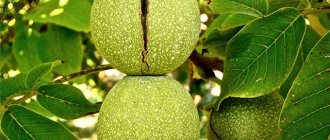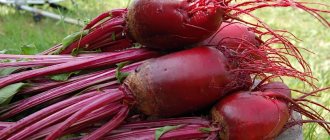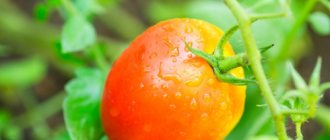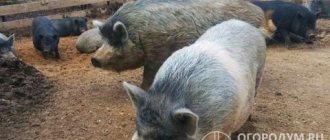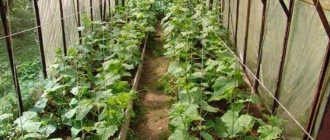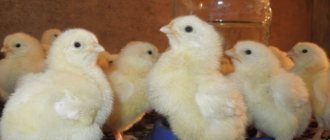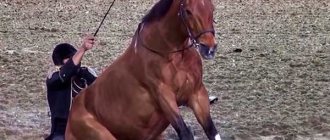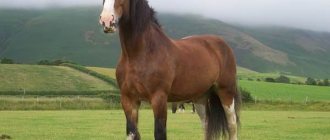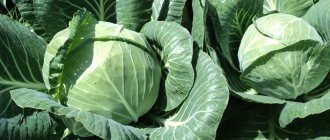Domestic gardeners pay special attention and interest to dukas, that is, cherry-cherry hybrids created by Russian and foreign breeders. In terms of taste, the fruits of representatives of this culture are closer to cherries, but are distinguished by increased sweetness and lack of astringency. For example, Duke "Miracle Cherry", which has long been grown in the southern regions of our country, has joined the list of early summer varieties with high yield potential, excellent taste and appearance of berries.
"Miracle cherry" brings abundant harvests of large, very attractive and tasty fruits
It is known that the shortened name “Duke” (translated as “Duke”) appeared and took root in Russian gardening thanks to the spread of the cherry variety “Maidyuk” (“English Early”, “Duke of May”), cultivated in England back in the 17th century.
“Miracle Cherry”, like other hybrid dukes, has not received official recognition in the form of registration in the State Register of the Russian Federation, and there is also no reliable data on its licensing and certification in the CIS countries. According to reviews, the variety is widespread in Russia in regions with temperate and warm climates, as well as in the southern and central regions of Ukraine. A general idea of its most significant features can be obtained from the table:
| Parameter | Characteristic |
| Culture | Duke is an interspecific hybrid of common cherry (Pgunus cerasus L.) and sweet cherry (Pgunus avium L.) |
| Variety | "Miracle Cherry" |
| Tree height | 2.5-5 m (depending on the rootstock) |
| Precociousness | 4-5 years after planting |
| Fruit ripening time | Early: June 1-8 in the Krasnodar region; June 21-30 in the south of the Central Black Earth zone |
| Type of fruiting | Mixed: on bouquet branches and on last year’s growth |
| Fruit weight | About 6.7-8 g (maximum 10 g) |
| Productivity | High, regular; on average 11-14 kg (maximum up to 28.5) per tree, about 9.6-11.9 t/ha |
| Appearance of fruits | Large, flat-round, dark red |
| Pulp/tasting assessment of taste qualities | Medium-dense, dark red, sweet, with cherry aroma / 4-4.5 points (out of 5) |
| Purpose of fruits | Dessert (universal): fresh consumption, use for making juice, jam, marmalade, compotes, dried fruits |
| Sustainability | Frost-resistant (up to −28 ℃), heat- and drought-resistant; in unfavorable years it is affected by coccomycosis to a moderate degree (1.1-1.7 points), highly resistant to moniliosis (0.6 points) |
| Registration in the State Register of the Russian Federation | Absent |
Description and characteristics of the cherry-cherry hybrid Miracle Cherry
Cherries and sweet cherries belong to the same type of fruit plants. Thanks to crossing varieties of cherries and sweet cherries, breeders invented an easy-to-care and productive hybrid (duke) called Miracle Cherry.
It is grown in southern regions with mild winters and warm summers. In appearance, dukes are more reminiscent of cherries than cherries.
Description of the tree and fruits
The tree is medium-sized, the crown is identical to the cherry tree, and the type of branching is similar to the cherry tree. The shoots are straight and smooth, the color is dark brown. The plant's buds are large and dense. The leaves are large, dark green, similar to cherry. The flowers appear on short stalks, are large, and grow in groups of 5-8.
The fruits are large, the weight of one is from 8 to 10 g. The shape is spherical, the surface is smooth and shiny, the color is dark red. The skin is dense, so the fruits are shelf-stable and suitable for transportation. The taste is delicate, dessert, the flesh is sweet without bitterness or sourness. The harvest is also valued for its pleasant berry aroma. According to the tasting scale, Duke is rated 4.8 points out of 5.
Frost resistance and drought resistance
Miracle cherry is a frost-resistant crop that can withstand temperatures down to -28°C. Medium drought resistance . When growing Miracle Cherry in the middle zone, it is recommended to provide additional nutrition to strengthen the plant’s immunity. Otherwise, it will not withstand a long and cold winter. Gardeners plant seedlings in windless areas; Miracle Cherry does not tolerate drafts and gusty winds. Mineral fertilizers - ammonium nitrate, superphosphate, potassium salt - are regularly added to the soil.
If dukes are planted in the Moscow region, the seedlings are provided with loose and light soil. This can be a pre-prepared mixture of garden and purchased soil. It is important to monitor the level of moisture - Miracle cherry is tolerant of lack of watering, but it cannot do without moistening the soil.
Resistance to diseases and pests
Immunity to diseases is strong, but with improper care, the Miracle Cherry is affected by moniliosis. This is a common fungal disease of garden crops, in which shoots and leaves are first affected, and then a dense brown coating appears on the fruits. Moniliosis develops quickly in humid and hot weather and is common in the middle zone.
Among the pests, the cherry fly is noted - the insect is common in the southern regions. The fly feeds on the juice of the fruit and lays eggs in the pulp. For prevention, gardeners regularly loosen the tree trunk and spray the plantings with Actellik or Zolon.
cherry fly
Pollinators
The plant is self-sterile, so gardeners plant other varieties of cherries nearby. Cross pollination provides the greatest yield. The cherries Annushka and Sestrenka, Priusadennaya and Yaroslavna are suitable as pollinators.
To attract pollinating insects, it is recommended to spray trees with a weak honey solution. To prepare it, you need 1 liter of water and 10 g of honey. Of the professional preparations, gardeners use “Ovary”.
This is interesting:
Description of self-fertile cherry varieties for the middle zone and Samara region
Early fruiting resistant cherry variety "Tamaris"
High-yielding early-ripening cherry variety “Malyshka”
Flowering and ripening period
Miracle cherries are early-fruiting and produce their first harvest 2-3 years after planting. If frosts are expected during the flowering period, the plantings are watered generously with superphosphate. Duke blooms from late May or early June, the fruits set together. The Miracle Cherry ripens by June 25-30.
Attention! One Miracle Cherry tree annually gives gardeners from 10 to 15 kg of harvest.
Advantages and disadvantages
The advantages of duka include stable yield, tasty and juicy pulp, and attractive commercial qualities of the fruit. When planted correctly and following the rules of care, the plant is rarely affected by disease. Miracle cherries are good both fresh and processed. Juicy and healthy desserts and drinks are prepared from the fruits.
The disadvantage of Miracle Cherry is self-sterility. Also, Duke is not suitable for growing in the northern regions of Russia; it is recommended to plant it in the Moscow region or in the south. Due to temperature changes, the buds freeze, which negatively affects the amount of harvest.
Duke features
To get a good harvest, other varieties of cherries are planted next to the duke. Some gardeners may have difficulties - planting and caring for cherries differs from the rules for caring for cherries. In this case, pollination on trees must occur simultaneously, which is difficult to achieve. If the garden is small, there is not always room for planting an “extra” cherry tree.
When flowering, the duke forms a thick and lush crown, so this plant also performs a decorative function. However, Miracle Cherry grows quickly and needs regular pruning and crown shaping.
Origin
This variety of crop was bred by the famous Ukrainian agronomist Lydia Ivanovna Taranenko on the basis of the Donetsk Experimental Horticulture Station (Bakhmut) as a result of interspecific hybridization by crossing the Griot Ostgeimsky cherry with the Valery Chkalov cherry.
“Valery Chkalov” (pictured left) and “Griot Ostheimsky” (right), which served as parent forms
During field tests in the period 2003-2006. in experimental plantings of the Rossoshansky Zonal Experimental Horticulture Station (Voronezh Region), “Miracle Cherry” proved to be insufficiently winter-hardy: freezing of flower buds (1.5-2.4 points) was observed in mild winters with a sharp drop in temperature to −28… −30 ℃ at the end of February.
Experts in the Bryansk region noted high resistance to moniliosis (0.6 points), an insignificant degree of damage to coccomycosis (1.1-1.7 points).
Based on the results of observations from 2004-2006. in the conditions of the Kuban zone of the Krasnodar Territory, the complex resistance of the plant to coccomycosis and moniliosis was confirmed (1-1.5 points).
It is noted that the minimum critical temperature in winter for cherry is −32… −35 ℃, return frosts at the level of −8… −9 ℃ during the flowering period cause 70-80% of flower buds to freeze. High temperatures and lack of moisture, which negatively affect the productivity of stone fruit crops, leading to the cessation of shoot growth, wilting and shedding of leaves, had virtually no effect on the “Miracle Cherry”.
According to reviews, the variety is drought-resistant and can withstand summer heat without problems, which is confirmed by test results
At the moment, this variety of crop is successfully cultivated in gardens and household plots in the southern regions of the Central Black Earth Region, in the North Caucasus and the Lower Volga region, as well as in Ukraine, Belarus and other post-Soviet countries.
Planting seedlings
Planting cherry is similar to planting other fruit crops. The best time for this is early spring. If you plant Miracle Cherry in the fall, there is a chance that the buds will freeze in winter, especially in the middle zone. Gardeners prepare seedlings in advance. The plant should be elastic and flexible, healthy in appearance. Spots and cracks on seedlings, traces of rot or pubescence are unacceptable. All this indicates improper storage of planting material or disease. Gardeners recommend purchasing seedlings only from trusted places.
Landing instructions
The landing site must be heated. In the fall, the soil is dug up, cleared of grass and leaves, and compost or manure is added for the winter. To improve the condition of the soil, add clean sand or sawdust to the soil. Further landing instructions:
- Holes are made in the ground with a depth of 60 cm and a diameter of 50 cm. A distance of at least 5 m is left between the holes.
- A seedling is dug into the hole, covered with earth, and a wooden peg is placed nearby.
- The seedling is tied to a peg and the tree trunk is watered generously with water at room temperature.
- Mulch the seedling with sand, hay, sawdust or leaves.
What varieties of cherry are there?
Before planting a cherry hybrid, you need to familiarize yourself with the different varieties of fruit crops and choose the appropriate variety for your climatic zone.
For the Moscow region, dukes with early ripening periods are suitable.
- The Rubinovka cherry variety is characterized by compact trees, no more than 2 meters in height and excellent yield indicators. The hybrid is capable of self-pollination and is characterized by increased resistance to low temperatures. From one plant you get up to 15 kilograms of fruits of excellent taste and quality.
- The Duke variety Excellent Velyaminova is characterized by high yield and excellent taste of the fruit. Trees do not tolerate low temperatures well and are prone to freezing of fruit buds and shoots. The harvest ripens in early August.
- For regions with temperate and cold climates, it is recommended to grow a hybrid called Ivanovna. The fruits ripen at the end of summer. From one tree you get up to 10-15 kilograms of rich red berries with a pleasant, sweetish taste.
Also hybrid varieties are Nadezhda cherry, Nochka, Kormilitsa and Fakel varieties.
See also: The best varieties of cherries for the Moscow region, cultivation and care
Subtleties of further care
Caring for Duke Miracle Cherry includes timely watering, fertilizing, protection from diseases and pests, pruning and crown formation. The yield, taste and commercial quality of the fruit depend on these procedures.
Watering intensity
2-3 weeks after planting, the seedlings are watered abundantly with warm, settled water. The stream is directed to the root circle or to the base of the trunk, bypassing young shoots. After a month, the duke is watered less frequently, about once a month. From 20 to 40 liters are consumed per plant, depending on the age of the Miracle Cherry. In rainy weather, the amount of water is reduced, as waterlogging leads to the development of fungal diseases.
Attention! Before watering, loosen the soil. This makes the soil breathable, water does not evaporate from the surface of the earth, but gets deep to the roots. Loosening also prevents the spread of insect pests.
Soil fertilization
In the southern regions, Miracle Cherry consistently bears fruit without regular fertilizing. This is one of the advantages of duka; caring for the plant becomes even easier. In the middle zone of the country, fertilizers are mandatory - they affect fruit set, flowering, yield and ripening time. Gardeners use mineral and organic fertilizers - manure, mullein infusion, double superphosphate, potassium mixtures. Once a season, foliar feeding is carried out - the plant is sprayed with a weak honey solution.
Pruning and crown formation
The crown is formed for the first time immediately after planting the seedling in the garden plot. The trunk and top are cut at 60 cm. In the second year, the shoots are cut by 30% of the entire length. Thanks to pruning, the yield of the Miracle cherry and the weight of the fruit increase. 5 years after planting, the duke is rejuvenated - the shoots are cut off at the level of a 4-year-old tree. If you do not prune and shape, the shoots will grow long and tangled, which will negatively affect the yield.
Disease and pest control
To avoid the appearance of ticks, flies and slugs, gardeners regularly take preventive measures. The appearance of mites is prevented by spraying with a solution of copper sulfate; they are carried out in dry and windless weather. Loosening the soil and applying mineral fertilizers help in the fight against slugs. To avoid the appearance of flies, summer residents regularly spray the Miracle Cherry with a solution of Bordeaux mixture.
Attention! Voles love to chew cherry bark. They reproduce quickly in winter and eat the bark and underground parts of the tree. Rodents are repelled by wood ash, kerosene sawdust, and peat chips. The compositions are placed in a tree trunk circle and trampled into the ground. The procedure is carried out at the end of autumn.
To combat diseases, gardeners use copper oxychloride sprays (40 g of the drug is required per bucket of warm water). The products include “Zineb” or “Topsin-M”. Spraying is carried out in accordance with the recommendations on the packaging. Purchase medications from gardening stores.
Features of growing dukes
When growing a fruit-bearing tree, they strictly follow the rules for planting seedlings and provide high-quality and timely care for the crop.
The timing for planting fruit trees directly depends on the climate and weather conditions of the growing region.
In latitudes with temperate and cold climates, planting work is planned for the beginning of spring.
For the southern regions, it is recommended to plant fruit trees in the fall.
Selecting a location
The hybrid is not planted in lowlands and wetlands. Also, trees do not tolerate close proximity to groundwater and soil water.
Well-lit and draft-protected plots of land on a slight elevation are suitable for growing duke.
The soil for planting the hybrid is prepared in advance. If planting work is planned for spring, a hole for the tree is dug and fertilized in the fall.
Duke prefers to grow and develop in light, fertile soil that easily allows air and moisture to pass through.
- A hole is dug in the area, up to 80 centimeters deep and up to 60 centimeters wide.
- The distance between plantings is maintained within 4-5 meters.
- The soil from the pit is mixed with humus, organic and mineral additives.
- Heavy, clayey soil is diluted with sand and peat.
- Soil with a high acid content is limed.
The prepared soil is left until planting begins.
Purchase and preparation of seedlings
To obtain an abundant and high-quality harvest of berries, duke seedlings are purchased from trusted nurseries or garden centers.
- Plants are carefully inspected for damage by fungi, mold and pests.
- The trunk of the seedling should be smooth, without obvious damage, with a small amount of foliage or fruit buds.
- The optimal size of the seedling is at least 60 centimeters.
On the day of planting in open ground, the seedlings are dipped into a container with a mash of water and clay for 10-20 hours. Such an event helps the tree to more easily adapt and take root in a new place.
Expert opinion
Stanislav Pavlovich
Gardener with 17 years of experience and our expert
Ask a Question
Important! When choosing planting material, special attention is paid to the rhizome of the plant. The roots of the seedlings should be well developed, uniform in color, without broken shoots or damage.
Planting process
Before planting, the holes for seedlings are thoroughly moistened, and a drainage layer of broken stone or brick is laid at the bottom of the holes.
- An earthen mound of fertile soil is laid out at the bottom of the holes.
- A seedling is placed on the top of the mound and the rhizomes are carefully straightened.
- The seedling is placed in such a way that the root collar rises 5 centimeters above the soil surface.
- The plant is sprinkled with earth on top, making sure there are no voids between the soil and the rhizomes; the soil under the seedling is lightly compacted.
- The planted tree is watered and tied to a support peg.
Advice! After planting is completed, the tree trunk circle is mulched with dry grass, sawdust or compost.
Harvest and storage
The ripeness of the Miracle Cherry is recognized by visual signs: the fruits become dark red, the peel becomes smooth and shiny, the stalk turns green. Tear the berries carefully, as damage to the shoots can cause a decrease in yield in the future. Sometimes gardeners use special scissors to pick berries. For fresh consumption, Miracle cherries are harvested 2-3 days before ripeness, for transportation - 5-7 days.
Gardeners most often eat the fruits fresh or immediately send them for processing. Miracle cherries are used to make compotes and preserves, juices and jams. The sweet and aromatic berry is also used to make dumplings and casseroles, salads and pancakes, sauces and healthy desserts. Miracle cherry is suitable for dietary nutrition, rich in vitamins and microelements.
Tree formation
Of course, to get a large harvest, you need to properly form the tree. You can be guaranteed to get a large number of fruits from 1 tree if you follow the following formation rules:
- It is necessary to regularly trim young shoots by 1/3 , and cut the thickened crown into a ring.
- Duke cherries tend to stretch upward. To slow down growth, gardeners need to pull the branches to a horizontal position to give the cherry a hemispherical crown type, which will help slow down growth.
- Successful pollination is only possible if there is a sweet cherry next to the Duke cherry. This will ensure high yield.
For successful pollination of the Miracle Cherry, the presence of cherries is necessary
Reviews from gardeners about Duke Miracle Cherry
Reviews about the Miracle Cherry are both positive and negative.
Tamara Konstantinovna, Krasnodar region: “The miracle cherry is truly a real miracle! I have never seen such large and tasty fruits. I’ve been harvesting for the fourth year in a row, and I’m very pleased. The plant does not cause any trouble and does not get sick. Last year I collected 12 kg of fruit from the tree. I recommend to all".
Pavel, Moscow region: “The miracle cherry has been growing on my plot for a long time. The harvest is different every year, the maximum was 8 kg. I like the taste, pleasant, cherry-cherry. I eat cherries only fresh, as they are not suitable for storage and transportation. Occasionally, the plant gets sick with coccomycosis, especially during times of frequent rain.”
This is important to know
Miracle cherry is a self-sterile variety, that is, its pollen is sterile. This means that a pollinating variety needs to be planted nearby. Otherwise, the tree will bloom but there will be no berries. It is recommended to use the following varieties of cherries as a pollinator for Miracle cherries:
- Donetsk beauty
- Annushka
- Sister
- Donetsk coal
- Yaroslavna
- Kitaevskaya black
- Dzherelo.
For pollination, you should not use varieties that are self-fertile, namely:
- Valeria
- Farewell
- Valery Chkalov
- Large-fruited
- Drogana yellow.
In order for the Duke to bear fruit well, it is very important to competently approach the issue of cross-fertilization.
Preparing for winter
Modern varieties of dukes are quite frost-resistant, so they do not require insulation for the winter - mulching the tree trunk circle is enough. Hay or fallen leaves are used as mulch. Varieties that are not particularly resistant to frost, grown in regions with harsh winters, are better insulated. Seedlings that have not reached 5 years of age are insulated for the winter, regardless of the growing region.
Insulation of dukes:
- the crown is covered with thick and dense polyethylene;
- The tree trunk is covered with snow.
Many gardeners wrap the trunks of fruit trees, including dukes, with burlap. Or covered with spruce branches. This method of shelter allows you to solve two problems - to save the tree from frost and from rodents. Hares are a terrible danger to young trees, and the smell of pine needles effectively repels them.
How to choose the right seedlings
To obtain a rich harvest, you need to purchase good quality planting material. To do this, you need to contact a gardening center or a specialized store. When purchasing a seedling, you should pay attention to the following factors:
- The root should be uniform in color, well developed, without visible defects or damage.
- A straight trunk should be of uniform color.
- Leaves and branches should be free of traces of pests and characteristic features of diseases.
- If the seedling is of high quality, its main shoot should be at least 60 cm high.
